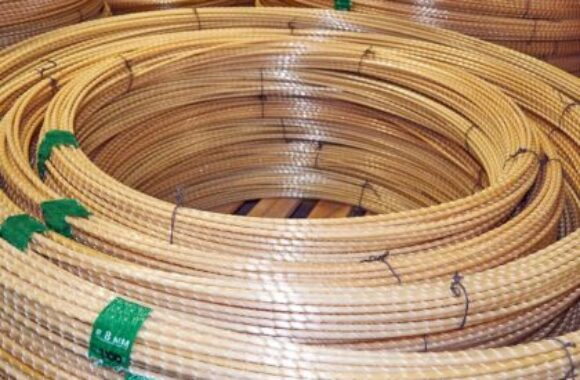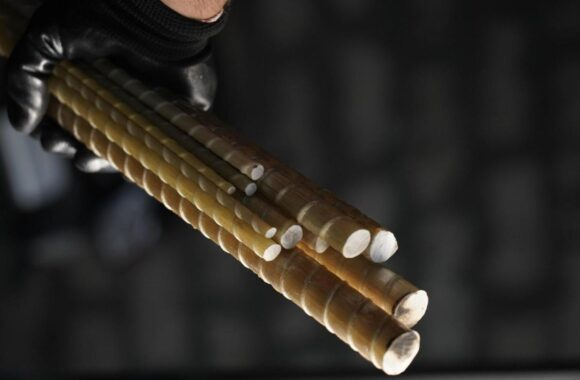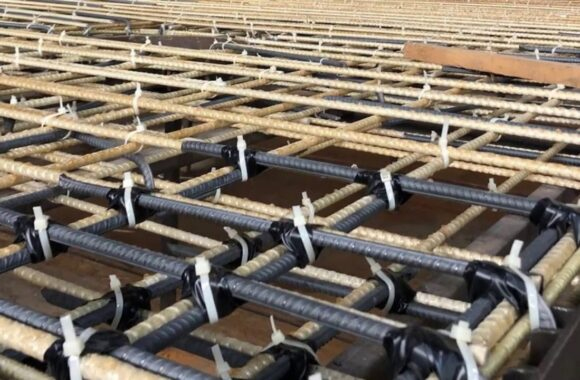FRP Rebar
EMI Komposites Manufacturer Of FRP Rebar
Fiber-Reinforced Plastic, or FRP, is an excellent, cost-effective substitute for steel. Fiber-reinforced polymer and glass fiber-reinforced polymer are other names for it (GFRP). Fiberglass rebars have been in use for more than sixty years, and its strength is three times more than that of steel reinforcement, with a maximum of more over one billion mega Pascal.

FRP Rebar
FRP rebars are a type of reinforcement bar used in concrete structures instead of traditional steel rebars.
FRP rebars are made by combining fibers such as fiberglass or carbon fiber with a polymer resin matrix. The resulting composite material has high strength, low weight, and is resistant to corrosion and other environmental factors that can degrade traditional steel rebars.
EMI Komposites produces FRP rebars in various diameters and lengths to meet the requirements of different construction projects. They are suitable for use in a wide range of structures, including bridges, tunnels, marine structures, and buildings.
Compared to steel rebars, FRP rebars have several advantages, including high strength-to-weight ratio, non-magnetic, non-conductive, and ease of installation. Additionally, FRP rebars do not corrode, which reduces the need for ongoing maintenance and replacement, ultimately leading to long-term cost savings.

What Is FRP Rebar ?
FRP rebar stands for Fiber Reinforced Polymer rebar. It is a type of reinforcement bar made from fiber reinforced polymer composite material, rather than traditional steel.
Fiber-reinforced plastic FRP is a durable, light-weight building material recognised for its corrosion resistance. FRP, which is simply a spirally twisted structural reinforcing rod, is commonly referred to as composite since it is composed of a variety of materials, including plastic resin and glass fibres. In contrast to iron and steel, which are prone to corrosion, the combination of these two materials yields FRP, or fiber-reinforced plastic, which never reacts to the chloride-rich atmosphere.

The glass fibres in the structural layer of FRP are joined together by the plastic resin, which serves as a binding agent. This resin can also be improved with a variety of different inclusions to improve the end product's qualities, such as increased durability against corrosives, temperature resistance, and fire resistance.
The service life is a notable distinction between FRP and steel when comparing rebar made of the two materials. Fiberglass rods can last up to 80 years, unlike steel products. Rebars made of FRP are resistant to acids and corrosion and do not rust.
Fiberglass products are good heat insulators because FRP has lower thermal conductivity than metal. For use in building and civil engineering, fibreglass mesh is a common material. Because FRP does not affect the performance of sophisticated medical equipment and gadgets, it is commonly utilised to construct scientific and medical buildings.
Rods are connected together with joints during the installation of FRP armatures, which does not require welding. Because it is substantially less expensive than steel and is simpler to carry to the construction site, FRP rebar deserves serious attention from those who want to save money on construction or reinforcing work.
We may now explore the fields of application of this fantastic material after giving a brief overview of FRP.
FRP Rebar Application

